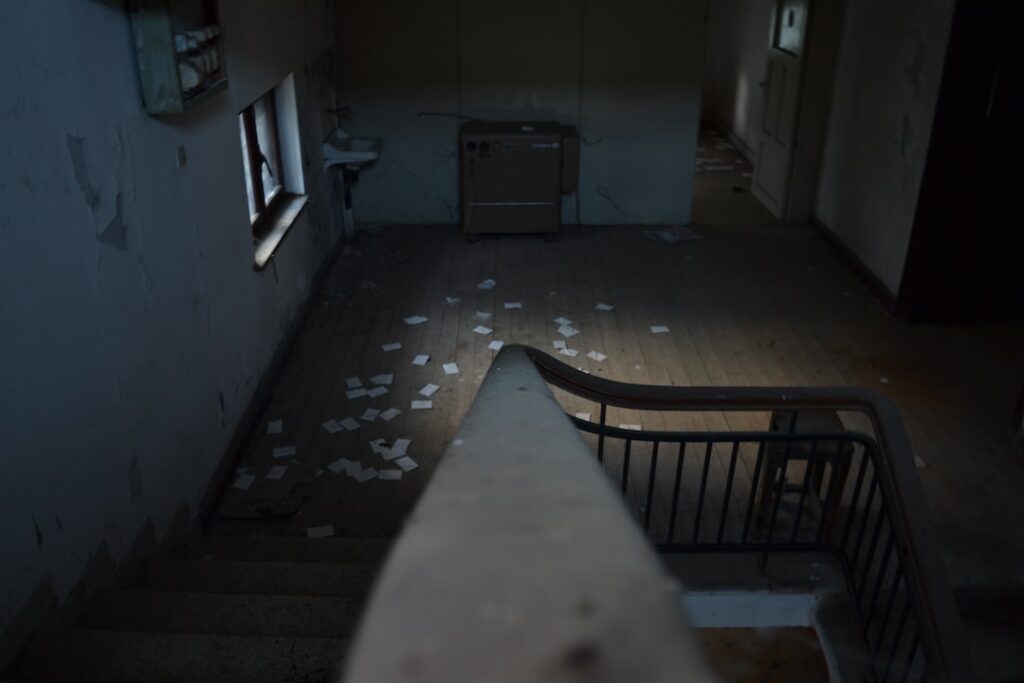How to Identify and Repair a Roof Leak from the Inside
Identifying and repairing a roof leak from the inside of your home can be a daunting task. Fortunately, with a few simple steps, you can easily detect and fix the source of the leak. Here is a step-by-step guide to help you get started:
Inspect the Attic
The first step in repairing a roof leak is to inspect your attic. Look for any visible signs of damage or water stains on the rafters and ceiling boards. If there is water damage, use a flashlight to locate the source of the leak. Make sure to take note of any insulation that may have been affected by the water.
Check for Discoloration
Once you have identified the source of the leak, you will need to check for discoloration on the roofing material. Discolored spots on the roof may be caused by water seeping in from the outside. If you see any discoloration, you will need to repair the roof from the inside.
Repair the Damage
Once you have identified the source of the leak and checked for discoloration, you can begin to repair the damage. Start by removing any wet insulation and replacing it with new insulation. Then, use a sealant to seal the roofing material. You may also need to replace any damaged shingles. Once the repair is complete, inspect the area to make sure the leak has been properly fixed.
Prevent Future Leaks
To prevent future roof leaks, make sure to regularly inspect your roof for any signs of damage. Additionally, make sure to keep your gutters and downspouts clear of debris to ensure that water is not able to seep in from the outside. By taking the necessary steps to prevent future roof leaks, you can save yourself from costly repairs in the future.
Tools Needed for Repairing a Roof Leak from the Inside
It is important to have the right tools on hand when you are repairing a roof leak from the inside. Having the right tools can help ensure the job is done right the first time, saving you time and money in the long run. Here are some of the most common tools needed for the job:
Flashlight: A flashlight is a must-have when it comes to locating and repairing roof leaks. You may need to inspect the attic space to pinpoint the exact location of the leak. A flashlight will help you do that safely and efficiently.
Caulk: Once you have located the leak, you will need to seal it with caulk. Caulk is a flexible, waterproof sealant that can be used to fill in cracks and seal around windows and other openings. Make sure to use a high-quality caulk that is designed for use on roofs.
Roofing Nails: Roofing nails are used to secure the roofing material to the roof deck. Make sure to use galvanized roofing nails to prevent rust and corrosion.
Hammer: A hammer is a must-have tool for any roof repair job. It is used to drive the roofing nails into place and secure the roofing material. Make sure to use a hammer that is specifically designed for roofing work.
Roofing Tar: Roofing tar is used to seal the edges of the roofing material. It helps to create a watertight seal that will help prevent future leaks. Make sure to use a high-quality roofing tar that is designed for use on roofs.
These are just some of the tools that are needed for repairing a roof leak from the inside. It is important to have the right tools on hand to ensure the job is done right the first time. Be sure to use the right materials and tools for the job to ensure a safe and successful repair.
Step-by-Step Guide to Fixing a Roof Leak from the Inside
If you have a roof leak coming from the inside, it can be a difficult problem to fix. This guide will help you through the process step-by-step so you can take care of the issue yourself.
Step 1: Find the Source of the Leak
The first step to fixing a roof leak from the inside is to find the source of the leak. You can do this by inspecting the ceiling and walls of the affected area for any signs of water damage. Look for stains, discoloration, or any other signs of water seeping through. Once you’ve found the source of the leak, mark it with a piece of tape so you know where to focus your efforts.
Step 2: Repair the Damage
Once you’ve identified the source of the leak, you can begin to repair the damage. Start by patching any holes or cracks in the roof with a sealant or caulk. Then, use a tarp or plastic sheet to cover the area and keep it from getting any worse.
Step 3: Apply a Waterproof Sealant
Once the area is patched and covered, it’s time to apply a waterproof sealant. This will ensure that the roof is properly sealed and that no more water can get in. Apply the sealant liberally and make sure to cover the entire area.
Step 4: Re-inspect the Area
The final step is to re-inspect the area to make sure that the leak has been properly fixed. Look for any signs of water damage and make sure that the sealant is doing its job. If all looks good, then your roof leak should be fixed and you can move on with your day.
How to Stop Water from Entering Your Home Through the Roof Leak
Roof leaks can be a major problem for any homeowner. When water enters your home through the roof, it can cause damage to your property, such as mold and mildew growth, and can also lead to costly repairs. Fortunately, there are some steps you can take to prevent water from entering your home through the roof leak.
1. Inspect Your Roof
The first step in preventing water from entering your home through the roof leak is to inspect your roof. Look for any signs of damage, such as cracked or missing shingles, or any other damage that could be allowing water to enter your home. If you find any damage, it’s important to repair it as soon as possible to prevent further damage.
2. Apply a Roof Coating
Once you’ve inspected your roof and made any necessary repairs, the next step is to apply a roof coating. Roof coatings are designed to protect your roof from water damage, and can help prevent water from entering your home through the roof leak. When applying a roof coating, make sure to follow the manufacturer’s instructions for the best results.
3. Check Your Gutters and Downspouts
Another important step in preventing water from entering your home through the roof leak is to check your gutters and downspouts. Make sure that they are clear of debris, and that they are in good working condition. If your gutters or downspouts are clogged or damaged, they can cause water to back up and enter your home through the roof leak.
4. Add a Roof Flashing
Finally, you may want to consider adding a roof flashing to your roof. Roof flashings are metal strips that are installed around any openings or penetrations in your roof, such as chimneys or vents. They help to keep water from entering your home through the roof leak, and can provide an extra layer of protection.
Common Causes of Roof Leaks from the Inside
The last thing you want to experience is a roof leak from the inside of your home. While some roof leaks can originate from the outside of your roof, there are several common causes that are from the inside. Knowing the common causes of roof leaks from the inside can help you take steps to prevent them.
Poor Attic Ventilation
Poor attic ventilation can cause moisture to build up in the attic, leading to roof leaks. To ensure proper ventilation, make sure that there is a continuous flow of air from the soffit vents to the attic, and that the attic fan is working correctly.
Improper Insulation
If your home has poor insulation, the warm air from inside your home can cause moisture to condense in the attic. This can lead to water pooling, which can lead to roof leaks. Make sure that your attic is properly insulated and sealed to prevent this from happening.
Damaged Roof Flashing
Roof flashing is a material that is used to seal the edges of your roof. If the flashing is damaged or missing, it can cause water to seep into the attic, leading to roof leaks. Inspect the flashing around your roof and repair any damage as soon as possible.
Cracked or Missing Shingles
Cracked or missing shingles can also cause roof leaks. Make sure to inspect your roof regularly for any damaged or missing shingles, and repair them as soon as possible. This will help prevent water from entering your attic and causing a roof leak.


